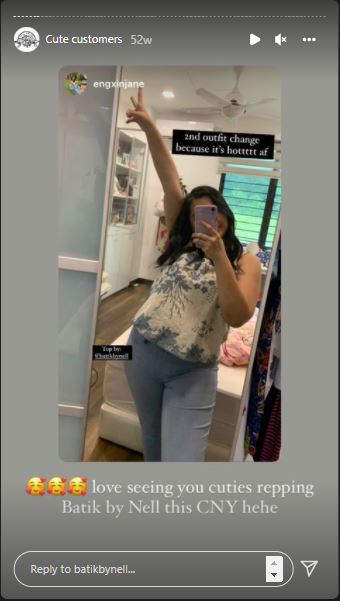Conversational Marketing: What Is It & Why Will It Be The Next Big Thing?
Direct marketing has been the central focus of most companies for a while, and involves heavily packaged, one-way communication with the aim of providing customers with as much information about the brands’ offerings as possible in hopes that they’ll take the bait.
However, with the globalisation and digitalisation of commerce over the past decade, customer expectations are higher than ever before. They demand personalised experiences and access to 24/7 support from brands.
Why? Simply because technology makes it possible.
The strategies digital marketing agencies create place heavy emphasis on generating high levels of reach and awareness, but once they’ve got the customer’s attention, holding it and turning into conversions is where it gets trickier.
Consumers are inundated with commercial content on a day-to-day basis, and very often, advertisements that catch their eye are quickly overtaken with the “do I really need this?” mantra. Brands are now faced with the challenge of convincing them that yes, they really do! This is where conversational marketing comes into play.
What Is Conversational Marketing?

Conversational marketing takes traditional marketing strategies a step further by providing avenues for two-way communication between brands and their customers. As per the expectations of the contemporary customer, these interactions should ideally be instantly accessible, one-on-one, personalised, and conducted in real time.
Instead of piling a bunch of generic brand content onto the audience, conversational marketing endeavours to obtain customer feedback in order to provide them with brand information that’s tailored specifically for them.
This involves things like modifying product recommendations or incentives to suit specific customer preferences, or answering customer inquiries regarding technical or logistical processes like payment and shipping.
It’s a brilliant approach that employs a much-needed personal touch into brands’ communication strategies, and creates meaningful and impactful customer interactions.
How do brands do it?
There are many ways that brands can approach conversational marketing, and they don’t all have to involve big budgets or tech-heavy development. In fact, small businesses on Instagram such as Batik By Nell are excellent examples of conversational marketing, utilising in-app messaging platforms to connect and converse with their market.

Source: Batik By Nell
This Malaysian mother-daughter duo creates and sells custom batik clothing on Instagram, and is well-loved both for their exquisite designs and highly accommodating customer service. The brand’s Feedback highlight is filled with customers praising their thoughtful approach to inquiries, which involves asking their customers to describe their tastes in fabrics, colours, and patterns in as much detail as possible in order to craft uniquely personalised creations.
The brand’s patience and dedication to each and every one of their customers’ preferences creates a pleasant and refreshing purchase experience, particularly in comparison to brands that adopt a more ‘what you see is what you get’ approach.
On the other hand, larger businesses with available resources to invest can look into leveraging on the multitude of technology currently available to enhance their conversational marketing efforts in the digital sphere, such as chatbots.

Credit: AirAsia
Chatbots come in two main forms- AI-powered and button bots. Also known as menu or flow bots, button bots are generally more affordable than their AI counterparts, and allow users to select preset options provided by the bot in order to narrow down their query and achieve a tailored result. Button bots such as Manychat are great for answering FAQ’s and even obtaining leads by asking the customer to provide their details and information in order to fulfil their requests.
Alternatively, AI-powered chatbots have the power to analyse consumer behaviour and feedback to enable automatically customised and targeted interactions. They can even be linked with advertisements to leverage on customers’ predetermined interest in a brand’s product. Although their budgetary requirements are a little higher than button bots, they’re also more intuitive, with the ability to harness customer data to handle more complex queries.
Conversational marketing can also be extremely effective in a virtual campaign or event setting. A fantastic case study of this was L’Oréal’s Malaysia’s 2020 virtual beauty festival, which used the conversational marketing platform Jumper.ai to let viewers trigger one-on-one chats with real-life sales advisors using dedicated hashtags, as well as place orders and make payment within the conversations themselves.

Credit: Marketing Interactive
In a mere 24 hours, the event garnered a month’s worth of online sales, making it a strong case for the power of conversational marketing software.
How businesses can benefit

Conversational marketing helps companies improve their customers’ experiences by identifying and qualifying their specific needs and adjusting their communications to provide information that’s more relevant to them. This shows customers that the brand cares about them as an individual, strengthening brand loyalty and encouraging repeat purchases.
It also vastly improves lead generation efforts by furnishing prospective customers with an interactive method of engagement, which helps optimise communication to convert visitors into sales by asking the right questions in real time.
Essentially, conversational marketing helps guide customers through each stage of the marketing funnel, picking up on awareness, identifying interest, facilitating evaluation and consideration, and directing them to an ultimate decision.
Best practices
To get started with conversational marketing, businesses should research and assess their audience’s preferred channels and tone of voice and focus their development accordingly, taking into account their own budgetary constraints, of course.
While it’s incredibly important for companies to define the structure of their communication such as standard replies and predetermined scripts, making room for continuous optimisation and personalisation based on customers’ feedback is a key to achieving a successful conversational marketing strategy.
The whole point of conversational marketing is to incorporate customer preferences into your marketing efforts, so understanding and implementing what your customers have to say is a must. To paraphrase the famous words of John F. Kennedy, ask not what your customers can do for you, but what you can do for your customers. 😏
Final thoughts
Keeping up with the ever-changing consumer landscape requires businesses to remain open and adaptable to the various tools, technologies, and strategies that appear on the digital scene. If you’re on the hunt for digital marketing companies in Malaysia that stay updated with the latest tools and tricks of the trade, you’ve come to the right place.
The Social Grooves team specialises in translating data-driven analytics into interactive and effective engagement strategies to help brands build purpose-driven channels of communication with their target audiences. Drop us a line at ask@socialgrooves.com to know more!

